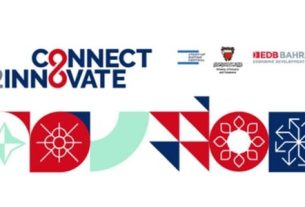Over the past two decades, financial capability (knowledge, skills, attitudes, and behaviors) has become increasingly important for financial service users. With digitization increasing access to a wide range of (often complicated) products and services, people face new utilization challenges and risks, including fraud and data misuse. Financial education can enhance the financial capability of consumers and lead to better financial decisions, thus complementing consumer protection and prudential regulation to foster a responsible, inclusive, and stable financial sector.
In the early 2010s, research painted a mixed picture, suggesting that traditional financial education focused on training consumers and school students in accounting, budgeting, and math had little effect on financial behavior in the short term, and even more negligible effects in the long term. On the other hand, financial capability approaches, focused directly on influencing financial behaviours through awareness, attitudes, knowledge, and skills, were seen to be more effective. However, a recent meta-analysis, which includes more evidence, suggests that traditional approaches to financial education positively influence financial knowledge and behaviors such as increased personal savings, in the short term, and hints at potential positive effects over a longer span of time.
Insights from the Impact Pathfinder
CGAP’s Impact Pathfinder consistently identified financial education as an influencing factor for the uptake and use of financial services, despite the fact that it was not a primary focus of the platform. This recurring signal prompted us to revisit the evidence: Could financial education be playing a more central role in what works, for whom, and in what circumstances? While much of what we found reaffirmed existing beliefs in the financial inclusion sector, the review also surfaced important nuances worth paying attention to.
Financial education can lead to increased uptake and use of financial services, but this may not always be a positive outcome for clients
Financial education aims to promote an informed and responsible use of a broad variety of financial products. However, evidence shows that increased uptake and use may not always be positive, unless customers have developed a deep and nuanced understanding of both the opportunities and risks of financial services and how to make informed choices. For instance, in Malawi, a short phone-based financial literacy intervention improved knowledge and understanding of loan terms but also increased loan demand, leading to overall increased default risk. Similarly, evidence from a classroom financial education intervention in Brazil shows that while participants improved savings and budgeting, they also increased their use of expensive credit for consumer purchases – an area not covered in the training.
Financial education – no matter how it’s delivered – should prioritize building customers’ financial resilience and awareness of their rights and responsibilities. Before introducing financial products that could expose people to new risks, such as credit, it’s essential to equip them with practical skills for managing money. When it comes to credit, financial education efforts should first focus on the basics of responsible borrowing, such as the importance of borrowing only what someone needs and can afford to repay on time. Only then should the education move on to understanding different types of loan options and their costs and terms, and debt management. The overarching goal should be the prevention of over-indebtedness and the reduction of defaults, which can only be attained if financial education complements consumer protection efforts. Indeed, financial consumer protection is a key prerequisite for financial service providers to behave responsibly toward consumers, especially those who have low financial literacy.
“Teachable moments” are an effective time to deliver financial education, but shouldn’t be used to market new products
Evidence captured in the Impact Pathfinder shows that people are more likely to learn new financial skills and adopt better financial behaviours during “teachable moments”, such as when starting a new job or planning for retirement. Increasingly, financial service providers are also using the customers’ onboarding phase of a new financial service as a teachable moment, offering customers practical guidance on how to manage their money. These opportunities matter because they allow customers to immediately apply the new financial knowledge and skills to their financial decisions. Evidence from India, for instance, shows that women who received financial education alongside a low-cost tool, like a savings lock box, showed improved saving behaviours. In Cambodia, supporting garment sector workers on how to manage and benefit from digital wages led to increased use of mobile money accounts, more regular savings amongst women, and greater confidence in handling financial emergencies.
While pairing financial education with the uptake of new products can help customers quickly adopt new behaviors and apply their knowledge in real-life situations, there’s a risk that it becomes merely a marketing tool. To be truly effective, financial education should go beyond product use—it should empower customers with broader knowledge about managing their finances, present them with a range of options, and encourage them to seek advice when needed.
Financial education should focus on practical experience and simplified messages, but these should be repeated and reinforced over time
Behavioral research showed that changing financial behavior (which is a key goal of financial education) requires more than financial knowledge, as it is also shaped by attitudes, emotions, and intuition. For instance, a study in India showed that numeracy level did not affect how financial education impacted financial behaviour. Rather, financial education that incorporates features like active learning, simplified concepts and rules of thumb, goal setting, and individualised counselling, and mass media outreach appears to be most effective. In Uganda, an evaluation of two financial education delivery methods to small-scale retailers showed that “active learning” – using exercises and materials to engage learners – positively impacted savings and investments, while traditional lecturing had little to no effect.
Evidence also suggests that alternative delivery methods, such as interactive SMSs, not just classroom training, may be more effective for low-skilled individuals with low levels of literacy and numeracy, as these methods engage attitudes, intuitions, and emotions, not just cognitive skills.
However, it is important to note that the available evidence on both traditional classroom delivery and alternative approaches is mostly short-term, and research on the effects of financial education beyond six to 18 months after treatment has been limited. To be effective in the long term, the delivery of financial education experiences and messages should not only be simple and practical but also repeated and reinforced over time, as shown by recent evidence on classroom-based financial education from Brazil and Peru. More long-term research is needed to identify the most effective combinations of financial education approaches across age groups. Key questions include: Does classroom-based financial education in youth lead to better outcomes in adulthood? Can it be reinforced through active or alternative methods later in life? And what mix of early education and adult learning delivers the strongest long-term impact?
From evidence to action
There is clearly no magic formula for financial education that works for all. Its effectiveness depends heavily on context, including factors like demographics and different environments. The evidence underscores the need for tailored, context-specific strategies and reinforces that financial education is most effective when embedded within a broader ecosystem of consumer protection and sound regulation.
Insights from the Impact Pathfinder offer examples for policymakers, funders, and financial service providers. These show that financial education delivers the greatest impact when it aligns with people’s life stages, priorities, and learning habits. Approaches that leverage “teachable moments”, blend cognitive and behavioral techniques, and allow for immediate application tend to resonate most and drive real behavior change.
However, critical questions remain.
- What are the best teachable moments for particular types of customers, and how can these be connected to the uptake and use of new financial services in a safe and informed way?
- How can financial education support responsible saving, spending, and borrowing decisions in different environments?
- How can key financial education messages best be reiterated over time to different segments of customers?
- What are financial education’s long-term impacts?
Addressing these questions requires further research, innovation, and adaptation, so that financial education not only informs but truly empowers low-income and vulnerable populations without adding to their risks.



